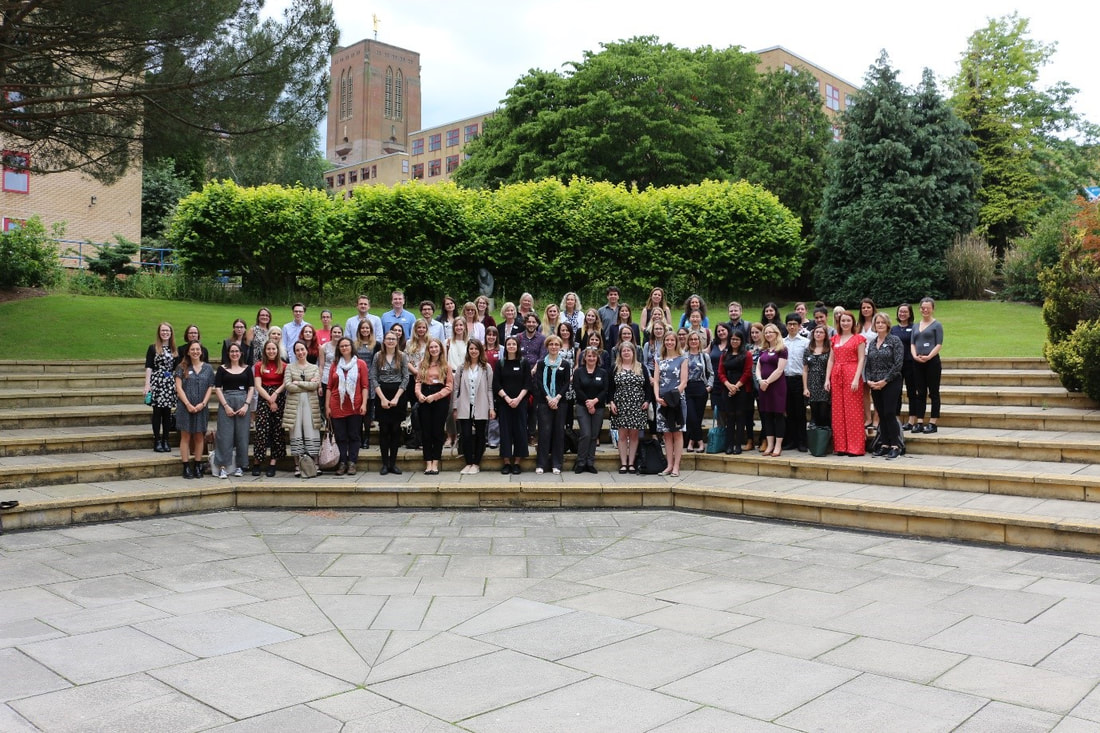
NDAS was hosted this year by co-founder and CoGDeV Lab Director Professor Emily Farran at the University of Surrey. Across 28 talks and 25 posters, the day attracted a wide array of fascinating research from large-scale genetics studies to neuroimaging research to research on transitioning between primary and secondary school, which facilitated much discussion about current findings in Neurodevelopmental Disorder (NDD) research and how we conduct this research.
The prevalence and acknowledgement of individual differences within NDDs became a key theme throughout the talks presented and the ensuing discussions. Complementary to this, there were also a number of talks in which trans-diagnostic analyses had revealed common core groups of traits across NDDs. Both of these themes facilitated a lot of discussion regarding how useful disorder diagnosis is. Samual Chawner opened the Genetic and Neural Contributions theme with insights into findings from the IMAGINE-ID study investigating the role of copy number variants (CNVs) as risk factors for neurodevelopmental disorders (NDDs) (15% of individuals with an NDD have CNVs). Amongst 2819 children with 13 different CNVs, impairments were seen across all cognitive and psychopathological traits compared to controls, with a particularly high prevalence of Attention-Deficit/Hyperactivity Disorder, Autism Spectrum Disorder, and Motor factors (factors which featured in a core group of traits across CNV groups). What was particularly interesting is that the analysis showed both qualitative and quantitative differences in the presence of NDDs in these groups. Demonstrating that even in the context of specific CNVs, there are individual differences in the presence and severity of NDDs. This raised an important issue: how do we explain where individual differences in neurodevelopment come from? An interesting audience discussion subsequently examined the role of protective factors (such as Executive Functions) and environmental factors (such as Home Learning Environment [HLE] and Socio-Economic Status [SES]) in contributing to these individual differences.
The focus on individual differences was further echoed in the Early-Career Keynote by Emily McDougal. Emily recently completed her PhD at Durham University on the role of attention in learning in autistic children. She presented a fascinating keynote drawing together a multidisciplinary approach to studying her PhD research question. First, she used neurocognitive measures of attention and learning in reading and maths to investigate differences between autistic children and typically developing children. Within this study, Emily noted that there were some children performing at floor or not being able to complete some of the attention measures. Rather than excluding this group and focusing on the means, Emily used cluster analysis to examine performance trans-diagnostically. This revealed three clusters, characterised by high attention and high reading/maths groups, average attention and reading/maths, and low attention and reading/maths, with the latter group featuring the most children with ASD. Emily concluded that whilst comparison between disorder groups and typically developing controls is useful, it is also important to address that the very children that might be performing at floor in these tasks are the children that should be included in order for us to understand the extent of cognitive functioning in NDDs. She then went onto present findings from a training study as well as perceptions of attention in learning from teachers. The combination of these studies made for an enriched investigation of how attention might contribute to learning in both typical development and autism, as well as showcasing the value of a multidisciplinary approach to studying NDDs.
The question of disorder-specific characteristics was discussed again as a prominent theme of Sinead Rhodes’ fascinating Established-Researcher Keynote address. Sinead opened with a thought-provoking slide detailing the myths and evidence of ADHD, before talking us through the diagnostic history of ADHD. She noted that a small number of individuals who have ADHD are diagnosed and that ADHD in girls is particularly under-diagnosed. She also discussed how the triad of impairments of inattention, hyperactivity and impulsivity in ADHD does not describe what she knows to be ‘ADHD’. Continuing the theme of individual differences, she also provided evidence that individuals with ADHD differ in their cognitive and behavioural profiles. Sinead concluded by introducing her new study, in which she will be taking a Toolbox approach of looking at a child’s individual profile to design interventions for 300-500 children with ADHD, DCD and ASD. This approach draws on child profiles rather than disorder categories to determine which interventions to use.
Other themes which arose throughout the day were the influence of anxiety on performance and development in NDD groups. Elizabeth Burchell, for example, noted that anxiety is the most long-lasting condition that individuals with NDDs have to cope with. Audience discussion often turned to the moderating role of environmental factors on performance, to conclude that this is something that we all should be taking into account, but that presently a few of us do. These factors include SES, school, sleep and HLE. Finally, there was the acknowledgement of the difficulty in testing low functioning individuals, and how this can often limit the range of abilities that are represented within research studies. The use of eye-tracking and EEG were discussed as useful tools to enable these individuals to be represented in research. As discussed, the theme of recognising and examining individual differences was a prominent message from the day as it draws attention to the complexity of NDDs and the research that is needed to understand the mechanisms underlying NDDs if we are to move forward as a field, to develop effective interventions and teaching practises.
| ndasreport.pdf Download File |
Written by Kathryn Bates and Emily Farran. Photos by Mafalda Batista Da Costa.
